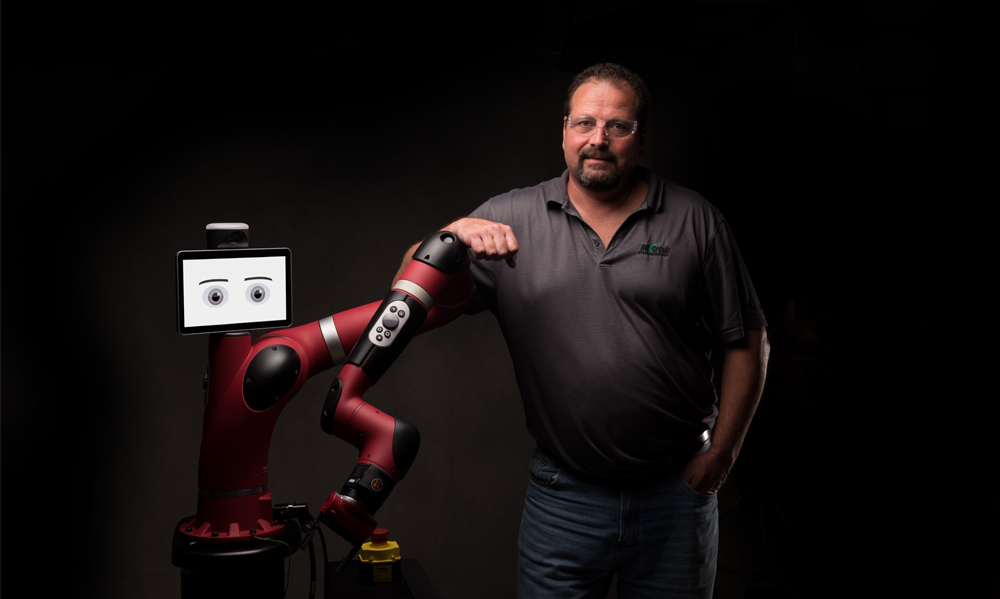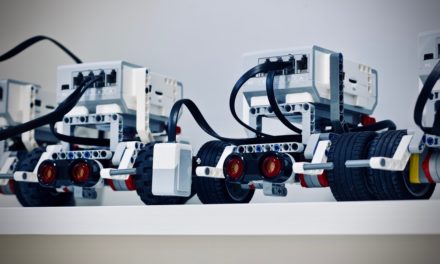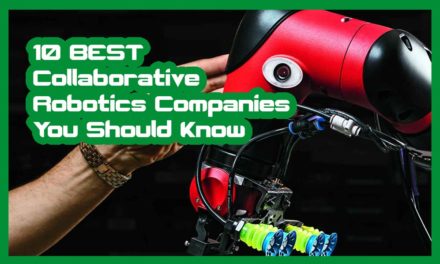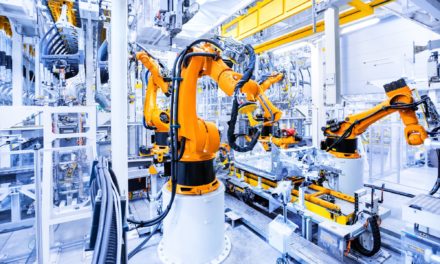Cobots (Collaborative Robots) were created to share the same work area with human beings that’s why they are called collaborative robots. They have evolved to become more independent and sophisticated machines that not only share the workspace but are genuinely work partners with human beings. However, the Robotics Industries Association current report indicates that industrial robotics have not been left behind, but they are still a force to reckon with.
The emergence of cobots has come with more choices for the users. Before this, consumers only had to get the right industrial robot for the task, but now, they have to check whether a cobot or an industrial robot is the ideal choice for the work.
To help clients make the decision, Ryan Guthrie, TM Robotics’ vice chairperson compiled the pros and cons for each robotic group.
Cobots Pros
- They can coexist with human beings sharing the same work area.
- Reduced primary cost of integration and changes to the workspace to accommodate the cobot when a restricted area is not required.
- Easy programming and integration.
- In less than a year, one can get back the money invested in the robot.
Cobots Cons
- The cobot may require a restricted working area to ensure employee’s safety. The initial cost of setting up the cobot’s cell can be substantial.
- Work speed can be hampered if there are safety measures put in place. For instance, the cobot may have to stop every time it senses the presence of a human being in its working environment. Some cobots are programmed to slow down when a person comes close and completely shut down when he is too close to cause safety concerns. For better cobot and employees integration, costly measures may have to be put into place.
- Because the robots are collaborative, they cannot work without human assistance and supervision.
TM Robotics does not manufacture cobots. However, this does not mean that their findings on cobots are biased. It is a well-researched list to help buyers make an informed choice. In fact, Guthrie suggests that firms should get cobots first to help employees familiarize themselves with robot functions before going for industrial robots that may handle more advanced tasks. Cobots also enable employees to concentrate on jobs that require human effort and leave more risky or repetitive processes to the cobots.
Industrial Robots Pros
- They require less human supervision, have a high-efficiency rate, much more than humans, even when expected to produce high volumes.
- The machine can be fully automated which makes it ideal to handle tasks too risky or to involving for human beings. They can be more accurate and precise than people.
- Sophisticated programming.
- 12 to 18 months return on investment.
- Can still be used in collaborative tasks but the level of risk should be accessed beforehand.
Industrial Robots Cons
- Not appropriate when low volumes of production are required.
- Because the robot may need a working cell, this may require changes to the workplace ground set up.
- It is not easy to alter the processes. This may make the process more costly when external resources are needed to accomplish a task.
- Employees need training or an external expert to initiate, run and maintain the robot’s program may be needed.
- The initial cost of acquiring a robot may be the same as that of a cobot, but when a work cell is needed, this may raise the price.
ISO/TS 15066 indicates the required safety measures required when using collaborative robots. According to Guthrie, more innovations in the robotics industry are making it possible to achieve safety requirements when operating or working together with the robots. He says improved safety measures when handling industrial robots enable collaborative processes where they can be trusted to work alongside employees without significant safety concerns. This allows buyers to achieve the higher payload and efficiency characterized by industrial robots and at the same time reap the benefits of cobots.
With the right safety measures, Guthrie explains that almost all robots can achieve collaborative power. In the technical standard ISO/TS 15066 February 2016 issue, the preferred industrial safety measures applied when handling robots in collaborative process are outlined and explained. This includes the maximum allowed robot capacity, speed, the required design and techniques needed to achieve collaborative goals.
In the 2016 Automation Conference, a discussion arose where one of the attendees wanted to understand the real meaning or need of cobots in applications required at their workplace. He pointed out that once they bought the cobot, it required its separate working cell away from employees because of the risky operations it was needed to handle. According to him, this did not make sense.
To answer the question, Guthrie explained that other than achieving the production goals, all automated processes manned by people should go through a safety assessment process to ensure operators are safe. It comes as a surprise to customers when after buying the cobot they realize it requires a safety cell. This can raise the initial cost to be the same as that of an industrial robot but without the extra capabilities.
To meet automation needs, customers can choose the right robot for their operations having taken into consideration the safety requirements beforehand, which will save money and time. Before making a purchase, it is important to ask yourself some questions. Here are some of the issues to think about.
- What is your overall goal? Why are you automating the processes? Is it to increase quality or quantity of production or cut down on the number of employees and operations?
- Can the production processes be changed or are they fixed and streamlined?
- Do you want to fully automate the processes or leave some to be handled manually?
- Do you have the required space and planning for the automation and machinery?
- Do you understand the interchangeable modules required for growth in the long term?
- What are your current accuracy, payload, cycle and reach requirements?






